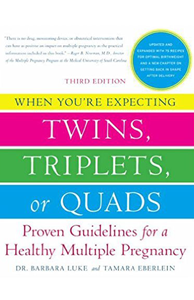With all due respect to my lawyer and architecture friends (including my architect son Taylor in Seattle, WA), I believe that medicine remains one great meritocracies in the United States. Certainly, much greater than even being President where it appears that any jack-leg with enough money is an illegitimate candidate.
How in the world can I make such a self-serving statement? In my freshman Biology 101 class (pre-med requirement) at Seton Hall University there were almost 200 students crowded into the large amphitheater in McNulty Hall. Four years later, fewer than ten of us were admitted to medical school. Last year, there were almost 5,000 applicants to MUSC for medical school admission. Fewer than 10% of those were offered interviews and only 160 were enrolled.
Following medical school graduation, new doctors then compete for residency positions in the specialty of their choice. Ob-Gyn is only moderately competitive. We review almost 200 applications, interview about 50 individuals and ultimately match with 6. Of those 6, about one will pursue an academic career at a teaching hospital and the others will enter private practice.
The quality of those academic or private practice opportunities will be influenced by each doctor’s accomplishments during residency, their scores on national in-service examinations and letters of recommendation from their teaching faculty. After 14 to 16 years of post high school education or training, and having survived the brutal weaning process described above, it’s not surprising that most physicians lack enthusiasm for continuing to prove their merit.
Last weekend, I received an e-mail announcing that, “In an effort to increase transparency, MUSCHealth will begin posting provider ratings online starting September 26, 2016.” The CGCAHPS (I don’t know either) surveys designed by PressGaney will be used by the University to rate providers. The incessant need to spend millions of dollars on consultants to tell you things that you should be able to figure out for yourself is a topic for another blog. Smile at people walking down the hallway towards you. Thank you, that will be $500,000.
The e-mail touted the fact that patients would be able to use the ratings to guide their selection of MUSCHealth providers when deciding where and from whom to seek care. MUSCHealth would also be able to use the provider ratings to guide ongoing improvement projects. Providers were reassured that based on yet unreleased survey data, that all MUSC providers had very good overall ratings ranging between 4 and 5 on a 5 point scale.
Even without the little red exclamation point, I knew I’d received a hot one. Over the next few days I sat back and allowed the blog to write itself.
It is always hardest to be the first to step up and point out that the emperor has no clothes. Credit goes where credit is due to a junior faculty member who started her e-mail with the naive, but poignant question, “How do we request to not be included in this rating process.”
Among many excellent observations, she pointed out that the evidence (yes, remember evidence-based medicine) does not support patient satisfaction surveys as a quality improvement tool. Reliance on patient satisfaction surveys results in antibiotic over-prescription, unnecessary procedures, and creates a culture where the emphasis isn’t on telling patients what they need to hear, but rather on what makes them happy.
The next several e-mails came from clinicians in multiple disciplines with practical concerns. Pain Medicine wanted to know how to comply with the new CDC guidelines (see my previous blog on this topic) for a “more conservative, non-narcotic multimodal approach” to patients in chronic pain who want a quick fix. A primary care nurse practitioner wondered what kind of patient scores she’d receive after informing her clients that “they are overweight, need to stop smoking and can’t have any more ambien.”
Pediatrics asked how to deal with the angry mother who doesn’t believe that viral symptoms shouldn’t be treated with antibiotics. A Family Medicine physician mentioned the angry phone calls to her office manager when she won’t “refill a narcotic prescription or a benzo or I refuse to start an adult on a stimulant without a proper psych evaluation.”
Others noted the obvious disconnection that satisfied patients rarely complete follow up questionnaires. Disgruntled patients, even if a minuscule number, are far more likely to make their displeasure known. It was said that provider scores will only be reported if there are at least 30 completed surveys. That only sounds good until you realize that some providers may have as many as 10,000 patient contacts in a year.
I don’t know my provider score (apparently it’s between 4 and 5 stars!!), but I’d be worried about my intolerance for non-compliance, the fact I won’t use narcotics for headaches, don’t believe in restless leg syndrome and generally believe that induction of labor is a venal sin.
Several other e-mails addressed the many things that impact a provider rating which would be beyond each doctor’s control. Many felt it was unfair for the attending physician alone to be accountable for all aspects of the patient’s experience. This is a significant issue for university-based physicians with extremely limited ability to influence logistical issues at a state institution compared to private practitioners where the office manager works for the physician group.
A very knowledgeable specialist with years of experience in direct competition with private practitioners listed some of these logistical concerns:
– scheduling errors in clinic with templates not used or not used correctly and excessive numbers of people with the ability to add to the template without discussing it with the provider
-lack of timely appointments (usually due to insufficient provider numbers)
-front desk staff that are uninformed, unfriendly or not engaging
-facilities that are difficult to navigate, poorly maintained or just not comparable with private practice amenities
-challenging parking
-excessive or duplicate facility fees for outpatient procedures/services
As dissatisfaction grew the e-mails became more pointed, challenging the rationale behind the proposal. The most contentious was the notion of “transparency.” My independent observation is that the more you talk about transparency, the less there is. Many e-mails questioned how publishing subject opinions about individual providers achieved transparency. One e-mail had this passage which I found particularly good. “(Transparency is) one of those administrative buzz words that it seems evil to argue against. However, I don’t think an argument can be made that we have some ethical/moral obligation to disclose internally collected patient satisfaction data.” That is especially true when other hospitals don’t do the same and multiple other physician review sites already exist. I’m on Angie’s List!
The second rationale behind the proposal is Marketing/Business.The assumption is that such a rating system will drive new business to our network. The opposite could also be true and the data suggests that any effect on market share would be minimal. For individual provider satisfaction scores to be an effective business/marketing tool, there would need to be comparable and inferior data from other health care systems and a mechanism by which the data can influence referral patterns. Those things do not exist.
The third rationale for such reporting is to serve as an “incentive” for greater physician performance and engagement. Although, this rationale has not been explicitly stated, it is clearly understood by the providers responding by e-mail. One responder referred to it as “a 3-Star Scarlet Letter emblazoned and certified as valid on their MUSC Profile.”
That same responder went on to describe this rationale far better than I can.”The idea is that we’ll be so scared of this that (to the extent we are capable) we will do a better job of “engaging” in the whole process of improving patient satisfaction (ie. taking an ever increasing role in non-clinical responsibilities).Likely this would have some effect, as none of us are perfect in this regard, but I think most of us would agree that this is a brutal tactic with many unintended consequences on patient care.”
Indeed, most clinicians believe that the proposed provider ratings serve primarily as a mechanism to “punish” faculty who are failing to score highly. Most providers envision their individual patient satisfaction scores being used against them at their year-end performance evaluation. Another nebulous administrative “metric” that only works against you, but never for you.At that point, the “punishment” moves past Game of Thrones-level shaming to contractual-level reductions in salary.
Many also expressed process concerns centering on the fact that this policy was instituted with virtually no input from clinical faculty or even departmental Chairs. A Distinguished University Professor expressed his dissent in the following way. “Regrettably, physicians abdicated several decades ago to the ever proliferating minions of administrators and deans. Teaching hospitals became “academic health centers” in which both the education of the physician and the care of the patient are no longer top priorities. Instead the powers that be view patients as widgets and grades physician providers on the basis of popularity ratings.”
Thankfully, in response to these and other passionate requests and, somewhat in shock, regarding the intensity of faculty alienation and anger,the ratings proposal was suspended for the time being. The administrative e-mail acknowledged “having touched a nerve” and that the institution did not currently have a “functional process for bi-directionally communicating programs, initiative, concerns, issues, etc.” However, it also said that they would “postpone this program until adequate discussion and vetting can occur.” Time will tell. This should be interesting.
As I near the end of this blog, I refer back to my opening paragraphs. While medicine is a true meritocracy, I imagine that any non-physicians reading this will view it as egotistical, arrogant and out of touch. How can anyone be against “transparency” in reporting physician performance.
I understand that and don’t disagree. Most of the responding physicians and other providers agree as well. Anyone who believes there aren’t providers who could improve their performance are simply lying or delusional. However, individual patient satisfaction scores don’t achieve that goal.
Even if you believe that patient satisfaction scores are reflective of quality, there are multiple other ways that either the hospital or the departments could pressure physicians with low scores in a “more constructive and less public and defamatory way.” If you believe such scores are an important marketing tool, then certainly use them in aggregate to trumpet our high overall patient satisfaction.
If you’re interested in improving patient care, then bite the bullet and publish evidence-based quality indicators. Publish performance metrics like infection rates, hospital readmission rates, re-operation rates, mortality rates, nursing staff to patient ratios, emergency room wait times or, do we dare, publish the costs for services provided. These are objective measures that are transparent.
Hospital systems are much more hesitant to publicize this type of data. In fact, they are poorly collected and closely guarded secrets that are infrequently revealed unless regulations require it. There are endless excuses that have to do with referral patters, privacy or patient mix.There is a growing demand for such objective performance metrics by the government and insurance providers which will only grow. Personally, I think MUSC will do very well compared to its competitors in terms of fair and objective performance measures.
Hey, you want to know my cesarean delivery rate, my VBAC (vaginal birth after cesarean) rate, my post cesarean infection rate, my average hospital length of stay or my induction of labor rate? I can’t tell you any of those, but if I could, I would be happy for you to know. In the meantime, let me assure you that I have,at least, a 4-star patient satisfaction score. That isn’t good enough for me, but maybe you are okay with it.
I struggled finding a Springsteen song that reflected the above blog. In the end, it’s a problem with popularity not reflecting quality. I ended up selecting “Pink Cadillac” which Springsteen acknowledges as a jokey, simplistic song with a fairly obvious double-entendre. The song was a huge fan favorite during the 1980s and was a frequent show closer. The song was often accompanied by Bruce’s take on the location of the Garden of Eden (10 miles south of Jersey City just off the N.J. Turnpike) and the nature of original sin. It’s fun, if not the most profound song he’s ever written. However, I was also influenced by a particular lyric which I heard in almost every e-mail I received from a member of the MUSC clinical faculty. “You may wonder how come I love you, when you get on my nerves as you do.” For the answer, listen to the video.
I actually called a guy once in San Francisco who was advertising a pink Caddy in the newspaper.
While I am tenured Professor and Maas Chair for Reproductive Sciences at the Medical University of South Carolina and have been on the faculty for more than 30 years, the opinions voiced in this blog are mine alone and do not necessarily reflect those of my employer.








Never one to be “popular”, this entire blog makes me cringe.
Sorry to make you cringe. I’ll write in and give you a “5”. ……………r
Roger, I agree with what you are saying. If you have time watch “Doc Martin” on PBS. It is about a former surgeon who moves from London, England to a rural coastal town to become the only doctor caring for the entire town. He is definitely more interested in diagnosing and treating the various illnesses than in becoming a popular British “good ole boy”. If you can’t tell this is a comedy but with serious undertones.
Another nice essay, Roger! I think the issues you highlight extend across much of academic medicine and into other fields as well. Look at any large academic center’s “Find a Doc” page and you’re likely to see these exact patient ratings. Someone is making a lot of money convincing hospitals that this is a worthwhile thing. Then there’s things like ratemyprofessor.com. The single best teacher I’ve ever had anywhere (a college professor who truly expanded my mind) has a rating of 2.3 out of 5. Why do we insist on judging everything by numbers on a rating (Likert) scale? They are almost always meaningless, poorly analyzed, and open to any interpretation. What in the world does satisfaction of 4-out-of-5 even mean? Does it mean that I’m kind of dissatisfied, or does it mean that I’m very satisfied but can imagine that some clinic exists that has an espresso machine in the waiting room, so I don’t want to give away my 5-score all willy-nilly? Don’t even get me started on how ridiculous it is to average ordinal data.
I think the reason that the world, and medicine, are full of nonsense rating scales is that they are cheap and require no actual knowledge of what is being judged. An administrator would have to actually understand your job in order to know the things that truly matter (c/s rate, etc), and it would take actual work to collect that data. Also, rating scale data can be interpreted in any way that is convenient. Publicly a hospital or department can brag that all of its providers have scores better than 4-out-of-5, and hold that up as a sign of quality. But when you go for your own evaluation they can point out that your score of 4.26 puts you in the bottom quartile of your peers who average 4.35.
Jim,
Great note. Thanks for the interest. We are all suffering from dysadministration and all the Motrin in the world won’t help. I agree with the absurdity of hospitals and systems hiring “consulting” firms and paying them millions of dollars to dole out cookie cutter advice – which, of necessity, is simplistic………………………..roger
I believe CGCAPS is made public in many systems. Big brother is always watching, and trying to measure us.
/ZDoggMD/videos/10154396835567095/?pnref=stor..
Thanks Phyllis. Hard to get off the grid, but got to keep trying. Take care……………..r
Spot on, Roger! NO ONE could have said it better. I have always strived to give my patients the best of myself and quality of medicine that I could. At some point, because of this type of planning and thinking, I have grown to despise administrators/administrations who have no idea the depth, the passion, the commitment and simple love many of us ( and I know you) have for our patients ( not customers!).
Can’t wait to read “Two drifters”.. All the best, Jamey
Thanks Jamey. Hope you enjoy Two Drifters.It’s a medico-legal story so I think you’ll like it.